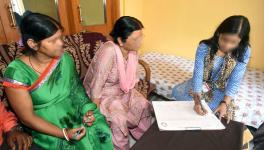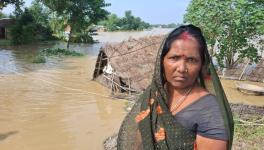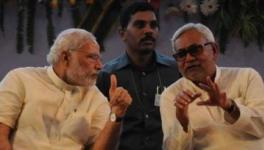Bihar: In Absence of Roads, Rural Residents Forced to Rely on Boats and Horses
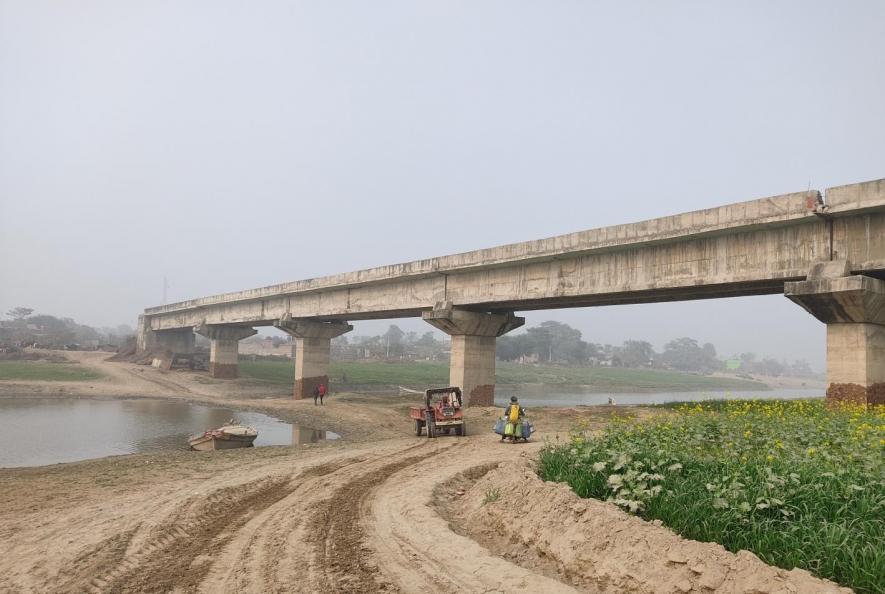
Muddy stretch over partial dried river bed, Khagaria
“If voted back to power, I will provide people with inter-village road connectivity. These roads between villages will further connect with state and national highways,” these assuring words were spoken by Bihar Chief Minister Nitish Kumar last year, during a video conferencing before the state Assembly elections 2020.
However, the demand for rural roads interconnecting villages are still echoing in several parts of the state, a fact that has crippled rural lives, according to many. Absence of proper connectivity has badly affected the education and healthcare of villagers, as teachers seldom undertake the painstaking efforts required to reach the village schools, while primary health care centres are also scant and located far away.
Small village-level ration-stationary shopkeepers, farmers, milkmen, etc. have to travel across deplorable, muddy roads for dealing at the nearest town market. Boats and horses as form of transport largely compete with motor vehicles. Meanwhile, over the years, the repeated but false assurances by public representatives and government of the day, have forced the people to accept it as their fate, as conveyed by some of the villagers.
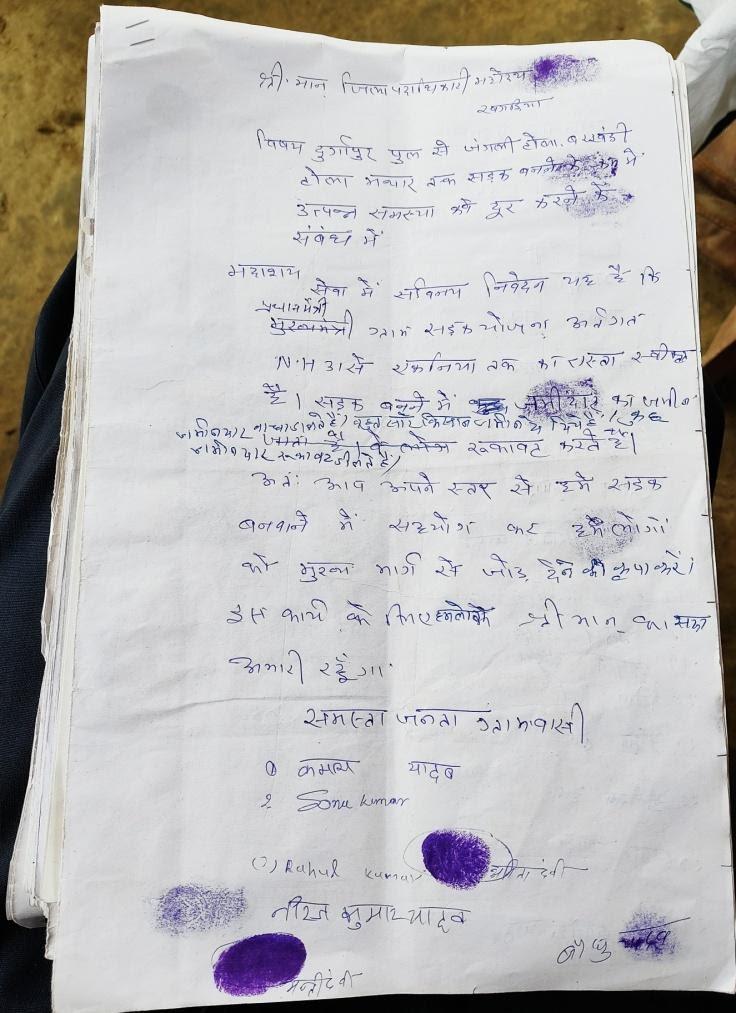
Letter pleading for road and bridge construction
More than 2,100 rural inhabitants of Mathaar village in Khagaria district, an area known for annual flood and devastation, have written to the district and block administration pleading for reconstruction of rural roads that includes a bridge over the river Burhi Gandak. Villagers have pleaded connectivity from Durgapur village(beside National Highway 31) to Barkhandi tola and Mathaar, covering population of roughly 30,000 people.
Further, the threat of embankment breach is looming over three panchayats namely- Rahimpur Dakshini, Tikarampur and Tophir, which may get drowned in the forthcoming monsoon season. If functional, the bridge would have connected two points with distance of 7 km.
Sadly, a huge population have now become habituated with the betrayal of promises about home, roads and embankments. One among them is Jaghru Sahni (35), a fisherman by profession, who lost a part of his house in the 2020 floods. He claimed no relief from government post the disaster as he did not expect any help from them.
Also read: Bihar Polls: Years of Apathy Keep Khagaria Residents Dependent on Boats for Transport
According to local residents’ claim, the might and whim of handful of musclemen and landlords have obstructed the construction of road while the government’s lackadaisical approach is adding woes to the lives of many. Complaints regarding the same have not yielded any response from the officials. During monsoon, due to vast tracts of diara land (flood prone land), the breadth of the river runs into miles, inundating three major rural villages of Khagaria block and stripping the villagers of connectivity and any source of livelihood.
When CM Nitish Kumar had first assumed power in 2005, he had stressed on the construction and maintenance of roads. His vocal invocation to cut short long and tedious travel to Patna (state capital) from any part of the state to mere 6 hours was a much talked and less acted affair. Now. road-less life in rural Bihar exposes the clear betrayal of such lofty claims.
Koshi-Seemanchal
The government’s actions to ameliorate the people’s issues in Koshi-Seemanchal region of Bihar questions good governance. “Instead of development, people despondently await the annual deluge considering it as inevitable fate and destiny, while the officialdom makes us feel hapless,” said former panchayat head Shivanand Prasad Yadav. The octogenarian, who was also the president of Ganga Katao Nirodhak Samiti (Anti-Flood Committee) told NewsClick that the construction of the embankment would help specially those settled in downstream of the river.
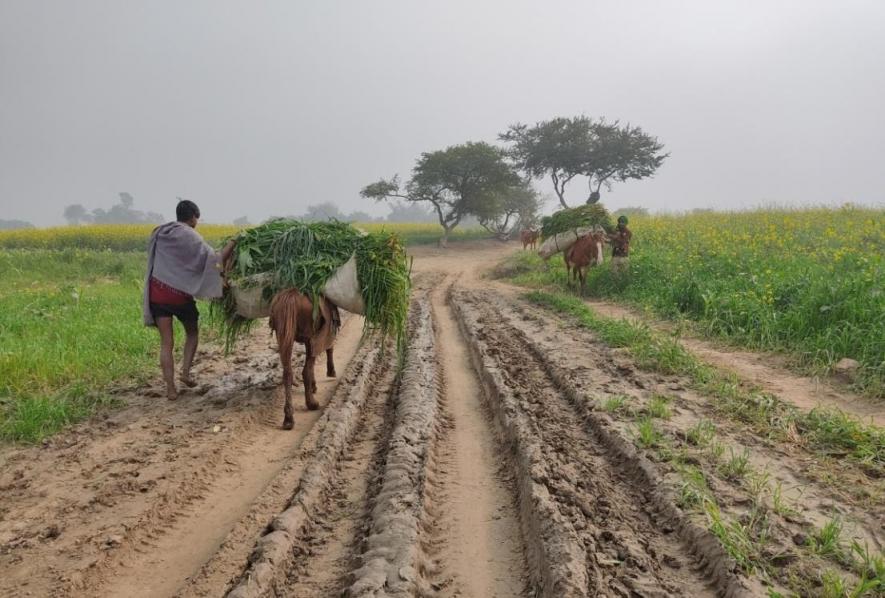
Horses have become the everyday transport on muddy roads in Khagaria
Besides cattle, horse is the most preferred pet by most rural families in the flood prone regions of Khagaria. The agility to cross river bed during monsoon and muddy terrains for transporting green feed makes it a symbol of relief and daily mobility. As per Ramu Yadav (28) of Mathaar village, concrete road is not in their fate. The basic necessity of road connectivity, has turned to a rare luxury which will never be a reality, he said. With the hopelessness expressed by Ramu, one can see that the narrative of ‘Susashan’ (good governance) knocking every door is crumbling. Ramu used to earn as construction worker in Bangalore, but the lockdown compelled him to reverse migrate to Bihar.
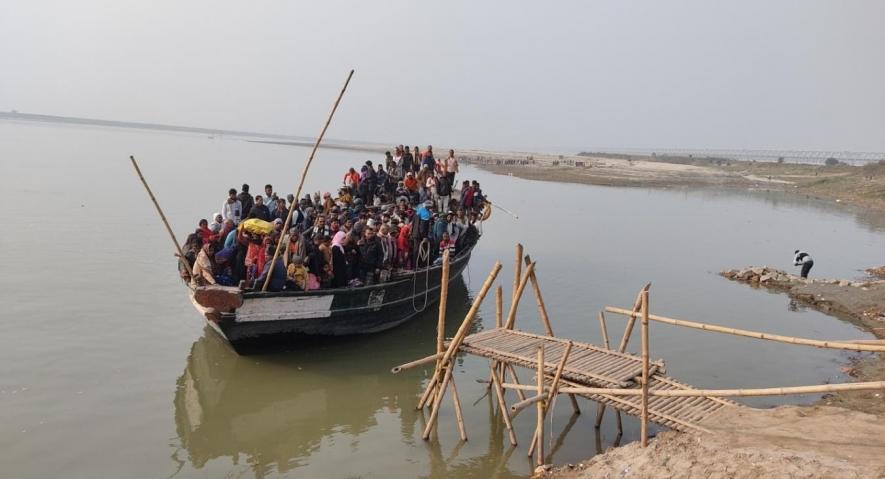
Commuters overloaded on boat
Munger
The neighbouring district of Munger is facing similar challenges. Amid claims of roads and connectivity, boats in parts of Bihar are in huge demand for commuters. The Munger bridge officially known as ‘Shri Krishna Setu’ over Ganga connects twin cities of Munger and Jamalpur to Begusarai, Khagaria and rest of north Bihar. The 3.7 km long bridge stands incomplete nearly after two decades since its construction commenced in 2002.
The incomplete bridge has two components. The functional part is the rail while the other defunct portion lacks approach roads on both ends. Hundreds of people risk lives everyday to cross the river without a bridge.
Purnea in Seemanchal region of Bihar is another symbol in terms of no country roads and rehabilitation post floods. Chanki village in Tarabadi panchayat of Baisi block exposes the detached saga of development. Seemanchal comprises of four districts i.e. Araria, Purnea, Katihar and Kishanganj and all are facing a dearth of country roads.
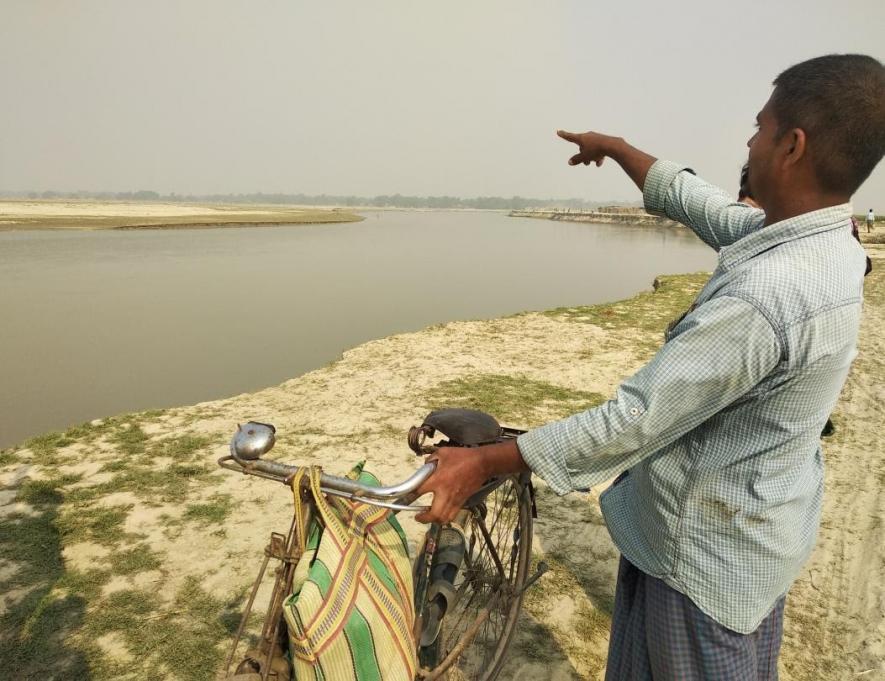
No country roads for miles, Purnea
The flood-prone river Mahananda has shifted its flow, swallowing thousands of lives and large tracts of rural settlements. The extend of damage caused by the river to the lands is visible in the atached photographs.
In such a scenario, covering miles on foot has become the fate of thousands. For any official work at the nearest Baisi block office or town market, one has to undertake a bumpy ride through muddy terrain. During rabi season, the inconvenience for commuters increases as crops in the field obstruct two wheelers mobility. If visitors with four wheelers want to visit Tarabadi, vehicles are parked around 5 km away at a village near Baisi town.
Also read: Shutdown Observed Against Poor Condition of NH 106 and 107 in Bihar
Zia-ul-Haq (45) has a boat which he uses to ferry villagers heading to town across Mahananda. Haq used to be a construction worker in Ahmedabad but was pushed back home after COVID-19 lockdown. For the local people, Haq is a person much in demand, as the boat is the only option to travel from one end to the other.
Mahroof (25), a member of Tarabadi Panchayat Samiti, explained the distress of the villagers, saying, “We are leading a disconnected life over years. With no bridge connectivity to its nearest town i.e. Baisi, we are excluded from the development narrative of the government. From our village we need to cover a distance of 6 km which gets segmented partly by mud-laden crop fields and the rest consumed by river Mahananda, that needs to be crossed with the help of a boat.”
Meanwhile, villagers allege unresponsive behaviour and ignorance of elected representatives (Member of Parliament and Member of Legislative Assembly) and questioned the pathetic connectivity. The absence of a primary health centre in the panchayat with an approximate population of 20,000 people is a telling fact about the neglect faced by these areas.
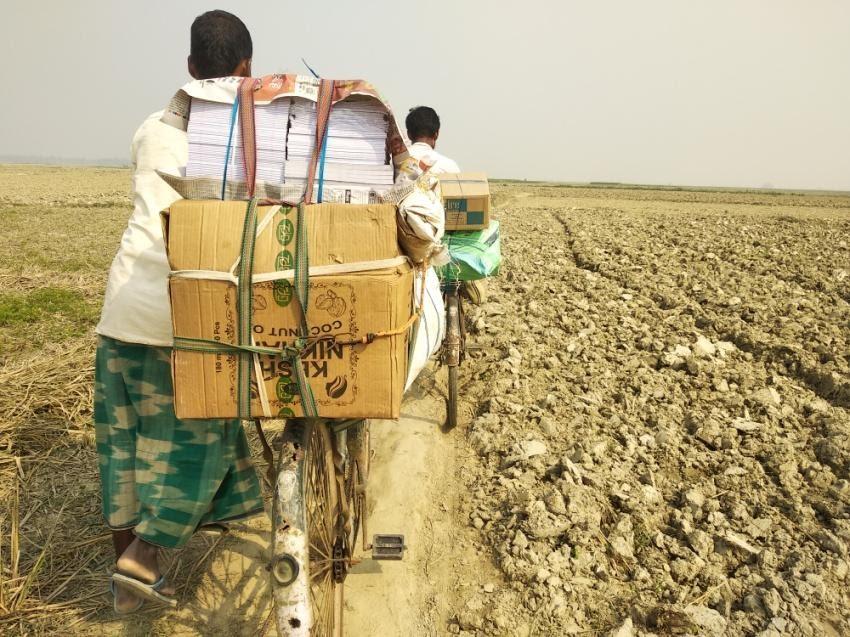
Muddy farm fields enroute to town
Mohammad Masood, who own a stationery shop at Tarabadi, said, “There is neither bridge nor road connecting villages to the town. Baisi is the nearest town, at around 6 km from here. We have to cross the river on boat and the rest on foot through bumpy roads amid crop-laden fields. If we take an alternate route, the distance rises to 50-60 km. Of course, not a single official has ever visited the village after the floods.”
While deaths due to floods in Bihar often make it to the headlines, the much larger question of loss of livelihood remains unnoticed. This is the reality of Seemanchal, according to Shourya Roy, who is pursuing Ph.D at University of Delhi, and working on ‘Community participation in Civil Governance’.
“The daily challenges of this region include loss of seasonal crop, land and houses which break down the morale of many in undertaking anything new for their future. Roads, bridge and embankment can temporarily be a relief for population in distress,” said the scholar. He also stressed the need of setting up of a Seemanchal Region Development Council that could end backwardness and misery of the region.
The flood prone hamlets suffer from humongous loss in the form of annual crop damage. Between 2006 and 2019, the total estimated crop damage according to the Disaster Management Department Government of Bihar, was over Rs 3,000 crore.
Disturbing scenes of rural connectivity match with official figures in government records. The 2018 report submitted to the Parliamentary Consultative Committee for Rural Development pinpointed Bihar with unsatisfactory grading in completion and maintenance works of rural roads.
Another report of Ministry of Rural Development highlighted that only 1,60,030 of the total 5,29,284 eligible inhabitants were covered under Pradhan Mantri Gram Sadak Yojana (PMGSY) scheme between 2014-2018. Bihar ranked third worst with 10,000 villages unconnected.
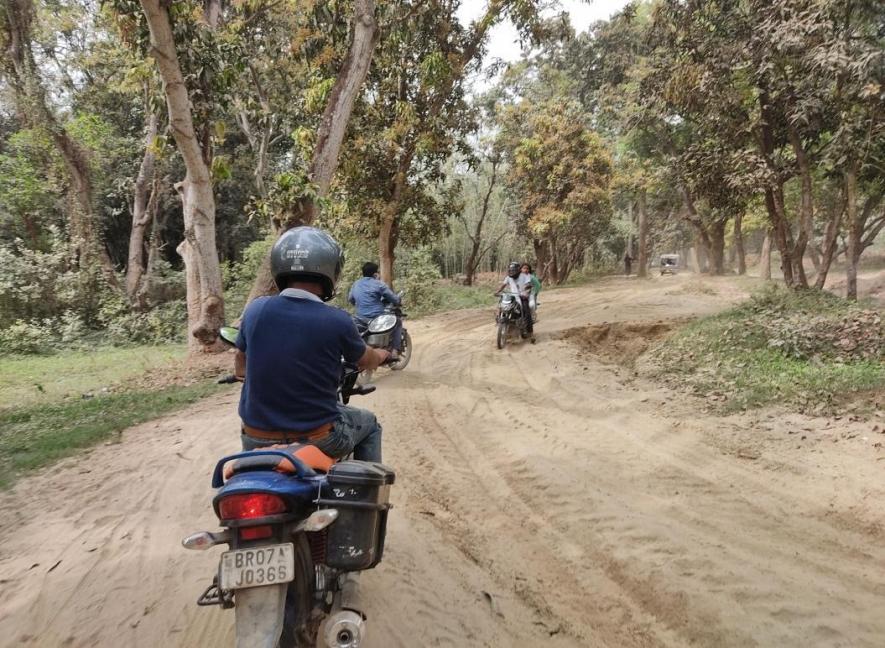
Muddy terrain, Darbhanga
Darbhanga’s Rasiyari village shares this deprivation. Situated in the belly of Kamla Balan river, floods is an inevitable fate. Over a 4 km long stretch is covered with loads of sand, posing a hurdle to commuters,. The breached embankment and no roads have found sub-liminal acceptance as a new normal for the rural masses. According to Nandu Kumar of Mithila Gram Vikas Parishad (MGVP) a social organisation active in rural hamlets of Darbhanga, interconnectivity of villages is ingrained in dust and mud since years. “Officials have abandoned such regions,” he said.
Get the latest reports & analysis with people's perspective on Protests, movements & deep analytical videos, discussions of the current affairs in your Telegram app. Subscribe to NewsClick's Telegram channel & get Real-Time updates on stories, as they get published on our website.













